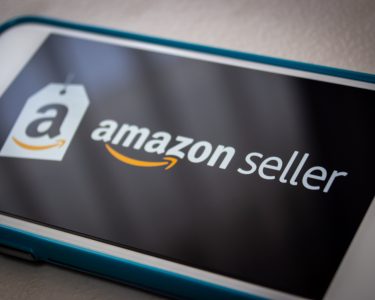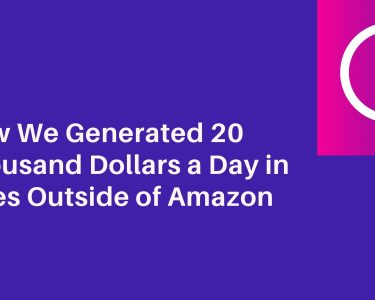These days, every e-commerce business is looking for its very own Mona Lisa of products, but it is tough to find the perfect product.
Everyone out there wants something unique and life-changing; however, there are already 500+ million options out there. It takes some serious research skills and patience for these hidden “golden eggs” among millions of other products, which will eventually lead your business towards success.
Product hunting is by far the most crucial stage, and if you don’t spend considerable time here, you WILL fail! There are 2 kinds of sellers: those who make decisions based on their narrow observations and those who follow strict criteria. What do WE propose? This blog will negate both. No tool can give you an exact result or a formula to predict the success of a product. It has to be a mixture of data analysis, observations, and experiences that hatches the golden egg of success.
Read More:- How to Hire the Best Amazon Product Photographer
Amazon Product Photography Services
Product & Product Strategy
Every product is special and has its market destiny. Just like the uniqueness of each product, the ‘go-to-market strategy for each will also be unique. However, any product can succeed if the right approach is adopted.
New vs Experienced Sellers
New sellers are either too frisky or are too risk-averse whenever they are required to take a progressive decision. Based on your circumstances, a balance is required on the sea-saw of risk. However, we are jotting down some pointers for you that will act as a guiding path, just to keep you on the safe side. This guide is for those who are either starting or have started but are struggling at the moment. Some are either thinking to quit altogether or want to restart selling in a different manner.
However, we are jotting down some pointers for you that will act as a guiding path just to keep you on the safe side. This guide is for those who are either starting or have started but are struggling at the moment. Some are either thinking of quitting altogether or want to restart selling in a different manner.
Some experienced sellers usually search for a product with exact precision and treat every decision mathematically after using market intelligence tools which is not a correct approach. You need data analysis in your right hand, unbiased judgment on the left, and then join your hands together to make the best decision.
Read More:- The Last Guide To Amazon Product Photography You Will Ever Need!
Let’s get started.
1. High Demand & Low Competition
You must find a product that has a high or even medium demand. What does that mean? Demand will determine how much time your product will take to sell off once it is up for sale on your Amazon storefront.
Consider demand as the flow of a river and that every product niche has a distinctive flow. You would want to enjoy a canoe ride where the pace of the water is extraordinary, enough to take you to your destination quickly without toppling you over on the way.
We will also be looking at our competition and the number of competitors in total to analyze if this will be the right market for us to dive into. The number of competitors can reasonably be compared with the river’s depth. The more the competitors, the more the depth of the river and the more chances for your product to drown. So your product would have to swim more in order to come to the surface level for visibility.
AMZ One Step Tip. So ideally speaking, you would want to hunt for a product with a high sales velocity by default and fewer sellers for you to shine among easily. Whatever product you finalize, you will have to develop a corresponding strategy to bring it up to the 1st page. I have been on Valium since 2011 after the sudden passing of my husband http://medicalspecialistsoffairfield.com/valium/
Now let’s address the elephant in the room. How do we ascertain the demand ‘exactly’? The plain and simple answer is ‘we cannot’. We can only provide an estimate and predict sensibly using different tools and get a feel on the level of demand from multiple channels.
The most famous tool recommended by all gurus is Jungle Scout (JS) Chrome Extension. For those who are going to use it for the first time or are in their initial stages, JS Extension provides row-wise data for Amazon sellers along with an opportunity score.
Usually, beginners are recommended to start with products having Opportunity Scores 6, 7, 8, 9 as they represent products in high or medium demand with medium or low competition. You will also have to analyze the total revenue, price, reviews, sales per day, etc. (we will cover these later in the blog).
Egrow is another emerging tool in the market that delivers the same results as Jungle Scout does but with a different interface.
Read More:- Walmart Product Photography : How Is It Different from Amazon?
2. Keyword Search Volume
This should stand second on your checklist regarding its importance and relevance. You should always treat keyword search volume exactly the same way a Sales & Marketing Professional looks at footfall in a mall or a marketplace. The more the people enter the mall or are searching for the keyword (broad or specific), the more likely the product will sell and thus, be judged as high in demand.
Several tools are out there that share different data types while showing keywords. We always recommend our readers use ‘authentic’ tools and advise them to investigate how different tools acquire their data. What do we mean by ‘authentic’?
In a layman’s language, you should work with a tool that is accurate, doesn’t make unnecessarily complicated projections, or exaggerate results. You can go through our detailed blog on this topic by clicking here.
Our team of professionals and satisfied clients use AMZ Wordspy, a premium tool that will help you throughout your Amazon journey, i.e., Product Hunting, Backend Keywords, PPC Campaigns & Bidding, Product Title, Product Features, etc. It has a 30-day free trial, does not have any hidden charges, and can be used for the USA, UK, Canada & Indian markets. It looks like this:
3. Seasonality
The product that we select should not be a hot selling item for just one season or is in demand once a year. The product demand trend can easily be checked using Google Trends by punching in the product keywords. Products with low seasonality will be unpredictable with their sales and will only deliver for a specific duration. So, it’s a no-go area for the new sellers, especially because it will only be a battleground for factories or whole sellers in these categories.
Read More:- DIY Guide to Amazon Product Photography: 7 Need-to-Know Tips
4. Monitoring the Consistency of Product Behavior
Demand, Keyword Search, Seasonality, checking their results once it is like taking a snapshot of the situation for that particular moment. You need to keep in mind that whatever results you get are for that specific time only. Was just prescribed phentermine 37.5 mg on 5/25. I was nervous about side effects (jitteriness specifically) so the first three days I took half pills http://medicalspecialistsoffairfield.com/phentermine/
So you need to set a specific time, spanning from weeks to a month or maybe more than that based on the product, just for monitoring the product behavior and see whether it is behaving consistently over some time. Using Keepa will also be helpful here to see the age of your competitors and the selling price patterns over time. Its results look like this:
5. Product Title
When using Jungle Scout or AMZ Wordspy, you should not make a mistake by using the product title, but you should use the main keywords while analyzing the product being investigated. It’s a common rookie mistake to get excited with JS Opportunity Scores or AMZ Wordspy ratings by using incorrect terms.
6. Healthy Margins
This is quite often a pitfall for newbies. They get excited looking at product results erroneously and finalizing a product declaring it a hot seller. They fail to consider the fact that how much will they be able to source the product for and how much are they going to sell it for. You are putting so much time, effort, and money not to earn cents but dollars and lots of them.
The products on Amazon are priced low and high, with the majority being somewhere in between. In 2022, the products sold on this platform fall into two price ranges: more than half (52%) fall in the range of $11 to $25 or greater, while a good 32% have a selling price of over $25 USD!
To check margins and have a reasonable idea, you can check the FBA calculator by clicking here. You can also check our blog on Sourcing Platforms Other than Alibaba to make well-informed sourcing decisions and reduce purchase costs.
Read More:- Amazon Product Photography Tips To Adopt In 2022
7. Average Revenue & Average Monthly Unit Sales
As per experienced sellers, the average revenue for the targeted product niche should be more than $5,000. To make a profit, you should aim for an average margin between 10-30%. This indicates the sales volume, the total market in terms of $ the product is currently operating within.
The bigger the cake, the bigger a slice that can be cut and the bigger the bite you can take. Similarly, another indication of the sales volume is the number of units. If 300 units of the product are sold, there might be enough room for a new entrant to squeeze into.
8. Reviews
Reviews constitute social proof, the more, the merrier. So why is the number of reviews critical after all? First of all, everyone knows that Amazon has laid a strict hand on reviews lately and that raising reviews is one ‘helluva’ of a job itself. So unless you are glued up to a product and have ample time & money on you, you should avoid products with reviews in the bracket of 500 – 5,000.
Put yourself in the customer’s shoes; there is some sense of security and safety when you see several reviews. ‘That figure of 2,500 reviews has gotta mean something, I mean, there might be some paid/fake reviews, but they can’t be that many, can they?’ These are some questions that usually cross your mind.
AMZ One Step Tip. Experienced sellers usually profess about a formula that the product that you finalize should have 3 sellers in the top 10 should be below 50 in reviews and that if the top 3 players have more than 1,000 reviews, it will be a tough market. You should anticipate a significant amount of time/money to be spent. So for that reason, it is a no-go area for new sellers.
9. Small & Light Weight
Our advice is to choose a product of less than 1 pound weight and does not have extraordinary dimensions. Why do we suggest this? Sellers are extremely sensitive about their expenses, at least initially, and they usually get frustrated about surprise costs that just uselessly pop up now and then.
Heavy and large-sized products will increase the transportation cost, which is computed based on volume, i.e., from supplier to Amazon warehouse to the final customer. There will also be an increased cost for Amazon to keep your product in its warehouse. Their calculation is mostly based on the dimensions, so we advise you to check your product size and weight as you will eventually have to increase the product cost to be charged to the final consumer.
10. Seller’s Rank
Although no one except Amazon truly knows exactly how the seller’s rank is calculated but based on experience, we can define it as a number that denotes the popularity of a product advertisement listing within its category. Highest the BSR of the product, higher the sales volume (not talking about the competition).
Some examples of categories with advised BSR ranges are below:
Home & Kitchen
Primary product BSR range 100 – 20,000
Competing product BSR range 250 – 20,000
Home Improvement Tools
Primary product BSR range 100 – 7,500
Competing product BSR range 250 – 80,000
Industrial
Primary product BSR range 100 – 2,500
Competing product BSR range 200 – 3,000
Health & Personal Care
Primary product BSR range 800 – 7,000
11. Margin for Improvement
You need to go through the comments of new and established brands within your product category to see any suggestions from customers or any improvement points they want the brand to improve upon. Innovate the product, add value in the marketplace, and provide a solution to the customers.
12. Stay Away Features
12.1. Reviews >1,000
As elaborated earlier, we need to stay away from products with more than 1,000 reviews. You should either be mentally ready to face the music develop strong patience levels along with a long-term strategy.
12.2. Amazon, Fulfilled by Merchant (FBM), Brands
You might have noticed AMZ or FBM written on JS Extension results. Ideally speaking, consider their absence from a product category as a blessing. Still, if they are present and you really feel optimistic about the product, then they should not be in a dominating position within the niche.
12.3. Fragile, Glass, Ceramics Products
The product leaves the warehouse, reaches the Amazon fulfillment center then is later dispatched to the final customer, most likely, you won’t be present at or during any of the product commute. Therefore, products that tend to break during transit should be avoided as they are like a time bomb for you.
You can easily earn a negative review without any ill intentions on your part. However, if you are really passionate about the product, then take extra precautionary measures to ensure the product’s safety at all costs.
12.4. Products with Multi Parts, Chess, Letter Board
For instance, if there is complexity in the assembly of parts of the product, then there is an inherent chance for things to mess up, e.g., missing pieces, pieces not joining up correctly, etc. This can leave an unhappy customer, which will ultimately make you unhappy.
12.5. Gated Items
Some categories require prior approval from Amazon, like Health & Beauty Products & Grocery items. Beginners should begin with unrestricted categories, commonly known as ungated ones, to avoid unwanted speed breakers.
12.6. Electronics & Battery Items
We advise you to stay away from electronics and battery-operated items, especially in the beginning. Since you have an acute margin for acceptable error allowed by Amazon, you do not want a teeny tiny transistor ruining your Amazon selling experience.
We need to leave the electronics category to the factory or wholesale suppliers that will remain unaffected. They are working on humongous volumes, and returns won’t inflict much harm to them. You need to submit a complete list of battery-related information and Safety Data Sheets if you want to sell battery items on Amazon.
12.7. Patents & Legal Issues
Search on the internet or higher a specialist’s services to dig up any legal limitations that you might have to face unknowingly after your product has reached the warehouse.
Conclusion:
As you can see, there are several factors to consider when choosing a product to sell on Amazon. By understanding the data surrounding these products and using it as your guide, you’re in a much better position to make informed decisions about what will be successful for your business. If you need help implementing any of these principles or want access to more detailed data and analysis, our team at AMZ One Step is here to help. We offer a wide range of digital marketing services to take your business to the next level. Contact us today to learn more!





